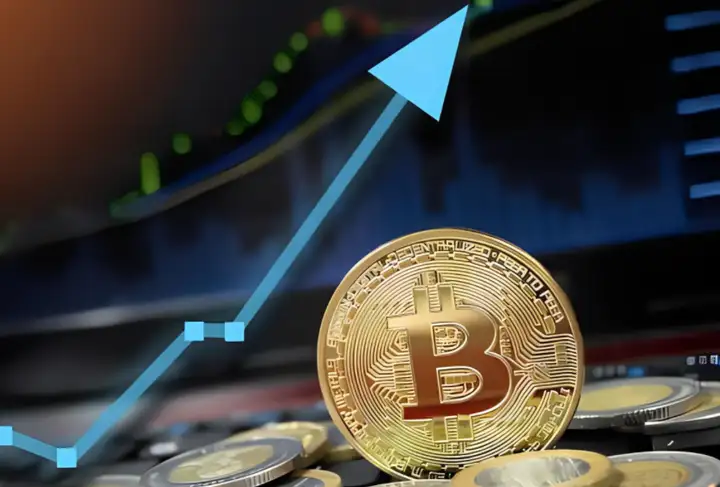In the past nearly 6 months, BTC has been fluctuating at a high level, with short-term investors suffering losses for 2 months in total. The decline once reached 33%, which was enough to erode the confidence of most people.
As Federal Reserve Chairman Powell's speech on Friday revealed that the interest rate cut was finalized, U.S. stocks rose sharply, and BTC also broke free from the suppression of the 200-day line in one fell swoop, completely getting rid of the suspicion of a bearish turn.
For more information, please visit Tuanzi Finance VX: TTZS6308

However, it must be pointed out that since the birth of BTC, interest rate cuts and interest rate hikes have not necessarily brought about a turning point in the market. Although this connection has been strengthened since BTC broke through the $1 trillion market value and integrated into the mainstream financial market through ETFs, BTC's own supply and demand logic is the fundamental factor that determines its price trend.
After a long period of consolidation, 4.15 million BTC chips were accumulated in the range of less than 20% between $60,000 and $73,700. In this range, three key cost lines were constructed: $63,700 for short-term investors; $62,000 for the median mining machine shutdown price in the United States; and $58,100 for the US ETF if it drops a little further.
There is another key data that most people no longer mention. After the fourth BTC halving in April this year, the annual supply of BTC will be reduced by 164,000, which is approximately equal to the sale of one Mt. Gox + the German government; in four years, it will reach 656,000, accounting for 22% of the 3 million circulation of the exchange.
All of these require time to accumulate. Looking back one year later, this may be the most critical support level for this round of real bull market, a very solid starting point, and may also be the bottom of the next bear market.
Specifically, it has been observed that a total of US$1.4 billion has flowed into the stablecoin and ETF channels, continuing the trend of stable capital inflows since July.
With the interest rate cut finalized and technical indicators and on-chain supply structure forming an upward trend, BTC is expected to fluctuate upward in the short term and is expected to set a new all-time high in Q3.
Federal Reserve and economic data
On Friday, Federal Reserve Chairman Powell delivered a major speech at the global central bank meeting, turning dovish for the first time since the interest rate hike cycle, and making it clear that the Fed's focus will shift from reducing inflation to protecting economic growth and employment.
Combined with previous information, the market understood it as the official start of the interest rate cut cycle in September, and the "shoe dropped". The three major valuations rose by more than 1%, the US dollar index fell to 100.68, the 10-year US Treasury yield fell to 3.795%, and London gold rose to US$2,511 per ounce.
It can be said that the trend of interest rate cut cycle is taking shape, which is expected to stimulate the gradual return of leveraged funds. At present, the Federal Reserve is still observing the highest probability of a 25 basis point interest rate cut in September. Before the September interest rate meeting, there are two important data to be released, namely the August CPI and non-agricultural data. If these two data exceed expectations, the probability of a 50 basis point interest rate cut in September will increase.
Funding
Following the massive inflow of $16.55 last week, stablecoins inflow this week was 934 million, which continued to decline compared to last week and the week before. Both USDT and USDC achieved positive inflows of 934 million and 58 million respectively, and USDC inflows slowed down.
BTC ETF channel achieved positive inflows in all 5 trading days, with a net inflow of US$507 million for the whole week. Among them, the speeches of the global central bank meeting on Friday stimulated an inflow of US$252 million on a single trading day on Friday. The continuous inflow of the two major funding channels provided material support for the rise.
Chip Supply
The market continued to "go from short to long", and the trend intensified. The scale of long-term holdings increased by 105,100 coins, while short-term holdings decreased by 107,500 coins. Short-term holdings decreased for 9 consecutive weeks, and last week was the largest decrease in eight weeks.
Short-term investors finally got rid of their losses last week, and selling also decreased, with losses exceeding $100 million in just one day.
2,100 BTC in the exchange's inventory outflow this week, the outflow has slowed down, but inventory reduction is still continuing.
The miners increased their holdings by 200 coins, achieving a five-week increase in holdings. The hashrate has dropped, but remains high. The hashrate has gradually returned to its historical high. Overall, the "miner massacre" has ended.
However, we still need to be wary of the last shot before the main uptrend comes. Assuming that Bitcoin experiences a more significant decline in the short term, it will be a safer entry time for long-term investors.






